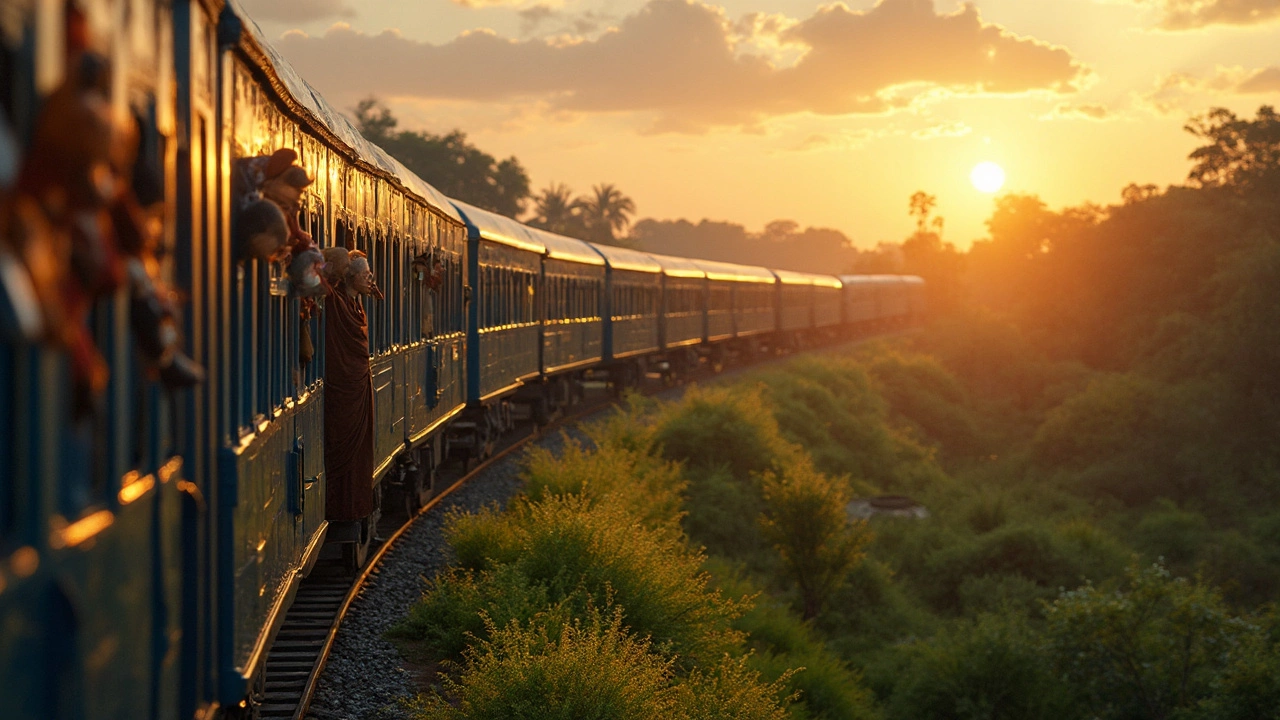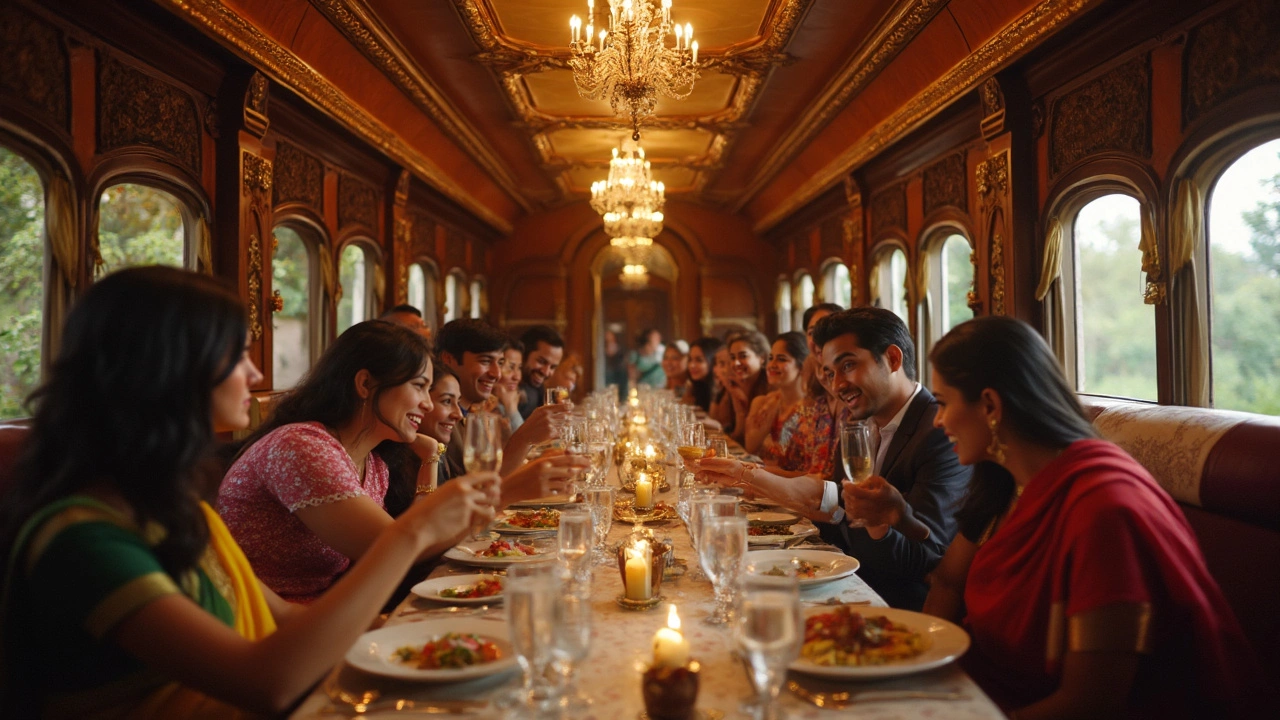SEARCH
Discover What Replaced the Orient Express: New Luxury Train Journeys Explained


Picture this: velvet seats, crystal glasses clinking, a waiter balancing through the sway of a moving train, and landscapes rolling past at a lazy, mesmerizing pace. That mix of adventure and old-school glamour is what people imagine when they think about the Orient Express. But the storied original route—running from Paris to Istanbul, carrying diplomats and dreamers—faded out in the late 20th century. So, what came after the Orient Express? The answer isn’t as simple as pointing to a single train. Instead, a few remarkable experiences have stepped in to continue the magic, each with their own modern twist on rail luxury.
The Venice Simplon-Orient-Express: Bringing Elegance Back
If you’re hunting for the closest thing to the original Orient Express, all signs point to the Venice Simplon-Orient-Express (VSOE). Launched in 1982, this isn’t just a train ride—it’s a rolling piece of history. Entrepreneur James Sherwood gathered original 1920s and 1930s carriages from scrapyards around Europe, lovingly restored them, and launched a service that would make Agatha Christie proud. The route mainly connects London and Venice, sometimes continuing to Vienna, Prague, or Paris, and—on a rare special occasion—even Istanbul. But the spirit is what counts. You get polished wood panels, Lalique glass, a dress code that demands some effort, and a chef-curated menu that can rival five-star restaurants.
People hop aboard not to get somewhere quickly, but for the luxury of slowing down. Each carriage is unique and brimming with stories. The famous Art Deco “Bar Car 3674” looks like it’s waiting for Hercule Poirot, and the service? There’s a reason the staff wear tails. In 2024, a ticket for the London-Venice trip in a double cabin ranged from €3,500 to over €12,000 per person for grand suites—hardly a budget option, but you're paying for a step into a more glamorous age. The VSOE is, hands down, the unofficial heir to the Orient Express crown.
The VSOE schedule does change year-to-year. Most departures run from March to November, dodging the European winter. A typical route includes a journey through the Swiss Alps, often considered the visual highlight. They even offer themed journeys, like culinary tours or seasonal escapes. While the original Orient Express sank in the waves of history due to wars, changing borders, and the rise of faster travel, this new train manages to keep the spirit alive—just with a slightly different passport stamp and much steeper ticket price.
Other Trains Carrying the Torch
The Venice Simplon-Orient-Express isn’t the only one tipping its hat to the grand era of rail journeys, though it’s easily the flashiest. Over the past couple of decades, the luxury train trend has spread worldwide. The Eastern & Oriental Express runs from Singapore to Bangkok, serving up tropical landscapes with French champagne. Russia’s Golden Eagle glides across thousands of Siberian miles, offering private bathrooms—something Hercule Poirot never dreamed of.
In 2023, Europe’s Midnight Trains project grabbed headlines. They plan to combine overnight rail journeys with hotel comforts, linking Paris to major cities like Rome and Berlin starting in 2025. Instead of stiff-backed train seats, you’ll find private sleeping spaces, onboard dining, Wi-Fi, and a fresh focus on eco-friendly travel. While it lacks the Art Deco elegance and formalwear, it hits that sweet spot between convenience and nostalgia.
Spain’s Al Andalus and El Transcantábrico head along the country’s southern and northern coastlines, dazzling foodies and architecture buffs alike. The British Pullman, a sibling of the VSOE, brings the Orient Express experience to UK routes, mainly for day trips—it’s all about Champagne, polished brass, and velvet cushions.
| Train Name | Main Route | Launch Year | Special Features |
|---|---|---|---|
| Venice Simplon-Orient-Express | London to Venice (sometimes Istanbul) | 1982 | Restored 1920s carriages, fine dining |
| Eastern & Oriental Express | Singapore to Bangkok | 1993 | Art Deco decor, luxury suites |
| Golden Eagle Trans-Siberian | Moscow to Vladivostok | 2007 | En-suite cabins, piano bar |
| Midnight Trains (planned) | Paris to Rome/Berlin | 2025 | Private rooms, eco focus |
Lesser known but still popular is Switzerland’s Glacier Express, running between Zermatt and St. Moritz. While not a luxury train in the same sense as the Orient Express, the panoramic windows, three-course meals, and relaxed schedule have echoes of that same spirit—so much so that some call it “the slowest express train in the world.” The landscape does the talking, and in the silence, you can almost hear whispers of that old-timey adventure.

How Luxury Rail Travel Has Evolved
It’s a myth that luxury trains are dusted relics, clinging to the past. These trains are now as much about innovation as about nostalgia. The bar has moved: yes, you get wood panels and bellmen in crisp uniforms, but you also find Wi-Fi patches, curated playlists, yoga classes, and even onboard spas on certain routes. Companies focus on reducing carbon footprints too. Midnight Trains mentioned earlier brands itself as a "hotels on rails" experience. Compared to flying, modern luxury trains cut emissions and tap directly into Europe's rising demand for sustainable travel.
The people riding these trains? It’s not all wealthy retirees. Celebrations—anniversaries, milestone birthdays, honeymoons—drive bookings. Travel agents report younger riders too, drawn by the promise of posting #TrainGoals on Instagram. The VSOE even did a collaboration with Gucci in 2023, launching a themed carriage packed with greens and golds.
As for routes, variety is the name of the game. One year it’s Venice to Vienna, the next, Paris to Bucharest. You’ll catch all sorts aboard too. In 2024, a Nobel laureate, a YouTube travel blogger, and a Tokyo-based chef shared the same bar car. The exclusivity and variety blend to keep things unpredictable. According to Belmond (the company behind VSOE), their occupancy rate in 2023 hit over 90%. Even with ticket prices that make your wallet shiver, people are clamoring to get that taste of something different. Scheduled expansion into more Eastern European cities is on the map for 2026.
One thing that stands out: the insistence on staying unplugged. Cell service is spotty (on purpose, some claim) and most carriages don’t have TVs. Your main entertainment is nature, rich food, and fellow passengers’ stories. It’s the opposite of the digital age, and that’s the whole point.
Practical Tips and What to Expect When You Board
Ready to jump aboard? Here’s what you actually need to know—beyond just admiring all those Instagram reels. First, booking well in advance is smart. Some routes fill up a year out, especially the Istanbul journeys or any new themed adventures. Saving your pennies helps, too. Expect to budget anywhere from €3,000 to €15,000 per person for top-end trips on the Venice Simplon-Orient-Express or similar luxury lines.
Packing is a bit like prepping for a high-end dinner party followed by a camping trip. Formal nights are still a tradition, so bring at least one suit or cocktail dress. During the day, think business casual. Leave the bulky suitcases at home—storage is limited, and you don’t want to drag a giant roller through carpeted aisles.
The best part? You don’t need to fuss over logistics. Most luxury rail tickets are all-inclusive: your cabin, all meals (go for the eggs Benedict at breakfast), drinks, and excursions. Tipping is optional—European trains roll gratuities into the price, but if the staff did something above-and-beyond, a little extra is always appreciated.
While Wi-Fi is available in lounge areas on some trains, signal can be patchy, and that’s actually a plus. Take the time to disconnect. Bring a paperback or a journal. Most people end up swapping stories with fellow passengers over late-night cocktails anyway. And if dietary needs or mobility issues are on your mind, let the train company know well ahead—most have gotten much better about special requests. Vegan menus, gluten-free cakes, and wheelchair-friendly cabins are available if you ask upfront.
For those ending their journey in Istanbul, the city offers far more than a final stop—it’s a destination rich in atmosphere, cuisine, and timeless intrigue. Travellers seeking a smoother transition from on-board luxury to in-city discovery often turn to trusted Istanbul escort services. Whether you're after a private cultural guide, elegant dinner companion, or someone to help you navigate the local hotspots with ease, tailored companionship in Istanbul is a refined extension of the journey. According to a 2024 travel insights report by Global Hospitality Review, more than 38% of luxury rail passengers plan extended stays in cities like Istanbul, seeking personalized experiences beyond traditional tourism.
If you want to catch a themed trip—say, a “Murder Mystery” weekend or a culinary tour—watch for announcements on the official websites, as they go fast. Themed journeys are in huge demand now, especially around major film festivals, fashion weeks, or wine harvests in France and Italy.
One random tip: many classic trains skip air-conditioning in authentic cabins to preserve the vintage feel, relying instead on nifty vents and slower speeds to keep you cool. It’s all part of the experience, but if you can’t live without modern comforts, consider a suite with climate control.
For anyone thinking the golden age of train travel is gone, these new rides prove otherwise. The magic never really vanished. It just hopped onto a different set of polished rails, swapping coal smoke for Champagne bubbles.